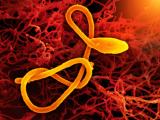Editor's note: A correction was made in this story on Jul 11 (2006) to eliminate errors concerning the numbers of hantavirus cases in Arizona and New Mexico since 1993.
Jun 13, 2006 (CIDRAP News) Nine human cases of hantavirus pulmonary syndrome (HPS) in five states were reported from January through March of 2006, which could signal an above-average risk of the disease this year, according to the Centers for Disease Control and Prevention (CDC).
As noted in the Jun 9 issue of the CDC's Morbidity and Mortality Weekly Report, HPS was reported early this year in Arizona (3 cases), New Mexico (3), Texas (1), North Dakota (1), and Washington state (1). The CDC says people should take precautions against the often deadly disease.
People contract HPS through contact with the saliva or droppings of rodents, most commonly the deer mouse. The disease is characterized by fever and severe pulmonary symptoms and is fatal 30% to 40% of the time, the report says (the CDC doesn't say how many of the cases early this year were fatal). The culprit is most often the Sin Nombre virus.
The number of cases reported in January through March matches the pace recorded in 1994 and 1999both years of high HPS case counts. In both those years, the preceding 1 to 2 years brought environmental conditions that favored a large rodent population, including increased rainfall and plant cover. The larger rodent population, according to the CDC, increased transmission of hantavirus among rodents, which heightened the risk for people.
HPS typically begins with a headache, myalgia, and a fever above 101°F, followed shortly by bilateral, diffuse lung edema that can resemble acute respiratory distress syndrome radiographically. Most cases occur in the spring and summer, according to the report, but this seasonal pattern varies by location.
Since the virus was identified in 1993, the CDC (as of May 10) has confirmed 438 HPS cases in the United States, 35% of which have been fatal. Most cases have occurred in states west of the Mississippi River, with New Mexico (68 cases since 1993), Colorado (49), Arizona (46), and California (43) outpacing other states.
The report also says that survival probability increases with early disease detection, so healthcare professionals should become familiar with HPS's presentation. The only treatment, according to the CDC, is supportive care.
CDC has initiated a "Seal Up! Trap Up! Clean Up!" campaign (see link below) to limit exposure to HPS and other rodent-borne diseases. Measures to prevent HPS include:
- Sealing up holes around the home to prevent rodents from entering
- Trapping rodents in the home to curb the population
- Cleaning up potential food sources and nesting sites
- Taking precautions when cleaning rodent feces or nest sites
CDC. Hantavirus pulmonary syndromefive states, 2006. MMWR 2006 Jun 9;55(22):627-8 [Full text]
See also:
CDC's "Seal Up! Trap Up! Clean Up!" campaign
http://www.cdc.gov/rodents




















